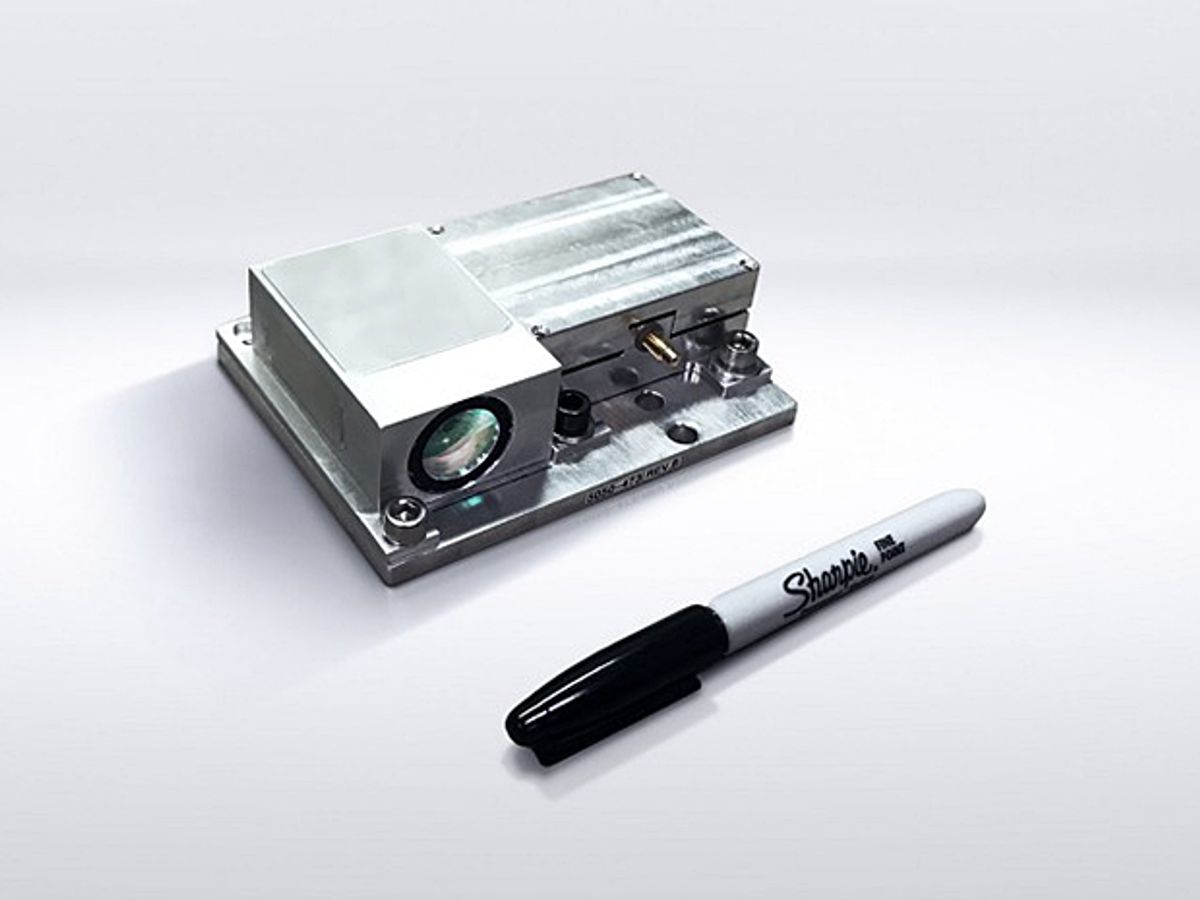General Motors announced on Monday that it had acquired Strobe Inc., a small California startup that has been developing a sub-$100 solid-state lidar for self-driving cars.
The terms of the deal were not announced but, given that Strobe was seeking only US $15 million in a funding round as recently as May, it is unlikely to be anywhere near the reported $680 million Uber paid for some of Waymo’s lidar team as part of its ill-fated Otto purchase.
Strobe looks to be a much better deal all around. The 12-person company is only three years old, and uses innovative frequency-modulated lidar technology first invented by its founder, Lute Maleki, at his previous firm called OEwaves.
Today’s commercial lidars, such as those sold by Velodyne and Quanergy, are time-of-flight systems. These calculate distance by measuring the tiny delay between the emission of a laser pulse and the reception of its echo. Time-of-flight lidars have a number of drawbacks. It is difficult to measure extremely short periods of time, which in turn limits their spatial accuracy. They also require very sensitive photodetectors and are susceptible to interference from the sun and other sources of light.
Instead, Strobe’s prototypes produce brief “chirps” of frequency-modulated (FM) laser light, where the frequency within each chirp varies linearly. Measuring the phase and frequency of the echoing chirp allows the system to directly measure both the distance and the velocity of objects in the road ahead. That reduces the computational load on the brains of an automated vehicle, enabling it to make faster decisions.
FM lidars are also relatively immune to interference and do not need especially sensitive photodetectors. However, producing high-quality chirps, with a good range of accurate frequencies that vary smoothly, has been tricky until now. Maleki’s advance was to use a so-called “whispering gallery mode” optical resonator to reduce the laser’s linewidth and generate a far more precise signal.
Visitors to St Paul’s Cathedral in London have long noticed that resonant sound waves can travel around the wall of a gallery in its dome, allowing even the quietest whispers to be heard from more than 40 meters away. A similar effect holds true for light waves in spherical optical resonators.
In Strobe’s system, light coming out of a resonator is injected back into light from the source laser, narrowing its linewidth. Modulating the optical properties of the resonator can then produce the highly linear optical chirps needed for automotive use.
In a blog post, Kyle Vogt, CEO of GM’s Cruise Automation subsidiary, wrote, “Strobe’s new chip-scale lidar technology will significantly enhance the capabilities of our self-driving cars. But perhaps more importantly, by collapsing the entire sensor down to a single chip, we’ll reduce the cost of each lidar on our self-driving cars by 99 percent.”
An image on Strobe’s website seems to suggest that the lidar will be much smaller too, with a footprint as small as an American quarter. A number of these would be needed to generate the 360-degree coverage provided by the rotating, roof-mounted lidars seen on many experimental self-driving cars today. “When used together, cameras, lidars, and radars can complement each other to create a robust and fault-tolerant sensing suite that operates in a wide range of environmental and lighting conditions,” wrote Vogt.
In a document prepared for a Korean trade delegation to Silicon Valley in May, and obtained by IEEE Spectrum, Strobe claimed that its prototype lidar had a range of 300 meters, a processing time of fewer than 45 milliseconds, and cost less than $100. It also noted that its first product would be commercially available in the spring of 2018.
Cruise Automation is currently testing autonomous passenger cars in San Francisco, Phoenix, and Detroit. A spokesperson for GM and Cruise Automation told IEEE Spectrum: “We are not ready to reveal our integration plans with Strobe at this time, however we plan on utilizing GM resources to continue to accelerate our timeline.”
Mark Harris is an investigative science and technology reporter based in Seattle, with a particular interest in robotics, transportation, green technologies, and medical devices. He’s on Twitter at @meharris and email at mark(at)meharris(dot)com. Email or DM for Signal number for sensitive/encrypted messaging.



